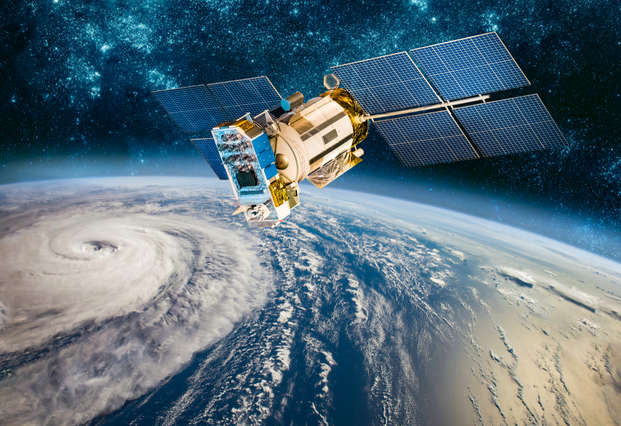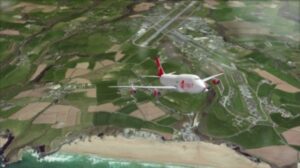Guide To Free Satellite Imagery Sources
27th Jul 2022
Most companies use free online mapping applications, including Google Maps, to make crucial decisions. On average, images in these applications are updated every six months. The refresh rate is related to population density. For this reason, satellite imagery of the remote places of our planet can be updated every few years, and many companies are hardly aware of how outdated images can be.
For companies that need fresh satellite images of earth, free services may not be the best solution. However, with companies and platforms that provide images for free, there’s a good chance you’ll find exactly what you’re looking for. In this article, you will find information about such satellite imagery providers.
Best Free Sources of Satellite Pictures of Earth
EOS LandViewer is a GIS data provider with quick satellite images search to extract valuable information for further use. With this tool, users can easily access the images they need from anywhere in the world. EOS Land Viewer users can highlight their area of interest, and the server will process the request to provide relevant imagery.
Free medium-resolution satellite imagery from various sources is available on the platform. Ten free images per day are available to users. After uploading the files, the users can process and store satellite images directly on the platform’s account. What’s more, EOS LandViewer’s compatibility with other GIS tools allows you to integrate your data with the software of your choice. This tool will help the user save time and money searching for practical business solutions.
USGS Earth Explorer provides a wide range of opportunities for obtaining and using satellite imagery. The platform works not only for the USA but all over the world. With its help, users can get images from various sources, including Landsat. In addition, users have a unique opportunity to receive declassified images from spy satellites to travel back half a century for free. The USGS Earth Explorer is also the only place where you can find hyperspectral images from NASA’s Hyperion instrument.
NASA EarthData provides users a chance to get an almost live satellite view, as many of the products available on the platform are updated within three hours. This tool will enable you to view and interact with full-resolution images worldwide. Moreover, users can receive rainfall measurements carried out by global missions. The data obtained with the help of NASA EarthData has many applications and will benefit various areas of human activity. For example, this data can be used to manage forest fires or monitor air quality. Users can interact with this platform through a computer or tablet.
Sentinel Open Access Hub is a trusted source of free satellite imagery from around the globe and more. With it, users can get high-resolution satellite imagery for download. This tool gives you access to various image types, including Sentinel-2 infrared, green, blue, and SAR images. Users can also take advantage of the open-source toolkit. This set can be downloaded for further work with images, including visualization and processing.
Digital Globe Open Data Program provides some opportunities to obtain free high-resolution satellite imagery. Of course, you can’t download the entire library for free, but there are several ways to get pictures that show even the most minor details.
Moreover, you can use the open data program to get the most up-to-date satellite images
from the places where typhoons, wildfires, floods, hurricanes, and earthquakes took place. Thanks to these pictures, you can assess the consequences of destruction as a result of natural disasters. Users can also download sample images for experimentation. These are high-resolution, full-color images that also show building outlines.
NOAA Class is a library of satellite images that can be accessed by creating an account. Users will then be able to upload satellite images from three sections. These sections include oceanic, atmospheric, and climate or environmental images. This platform does not have the easiest or most intuitive interface, but it allows you to immerse yourself in working with various satellite images.
INPE is a catalog of satellite images developed by the Brazilian Department of Space Research. This library offers a free download of images of CBERS, which is a joint space mission of China and Brazil. Users can get data from Africa and South America by creating an account, as the server needs your email to respond to your request.
NASA Worldview provides access to various scientific products, not just free images for processing. However, with the help of these products, you can get a lot of valuable information about natural disasters and their dangers. Users can also use the filter to select the discipline of interest.
Metrics for Satellite Imagery
Satellite imagery is based on physics that is difficult to understand. However, you can explain it to users using the words resolution and revisit. The first concept refers to the level of detail of objects on the surface.
Revisit tells us how much time has passed between receiving images from the exact total of the same place by the satellite. With daily viewing, you can track the development of a particular phenomenon. Some providers also offer real-time satellite imaging. This parameter depends on the number of satellites owned by the supplier.
Spatial Resolution
From open sources, today, users can get a lot of satellite images from around the world. Users can free download, process, and extract valuable information from low, medium, and high-resolution photos. However, each type of imagery has its own advantages and disadvantages.
Satellite images of low and medium resolution
Pros:
- large selection of free image sources
- spectral bands for analysis
- access to images in natural colors
- a large selection of historical photographs
The main disadvantage of low and medium-resolution images is the low level of detail of objects on the surface. For this reason, they are not suitable for all purposes.
High-resolution satellite imagery
Pros:
- the ability to see the details
- the ability to set tasks for the satellite following customer requests
Cons:
- high price
- small coverage area
- difficulties with regular updates




Thank you for your comment! It will be visible on the site after moderation.